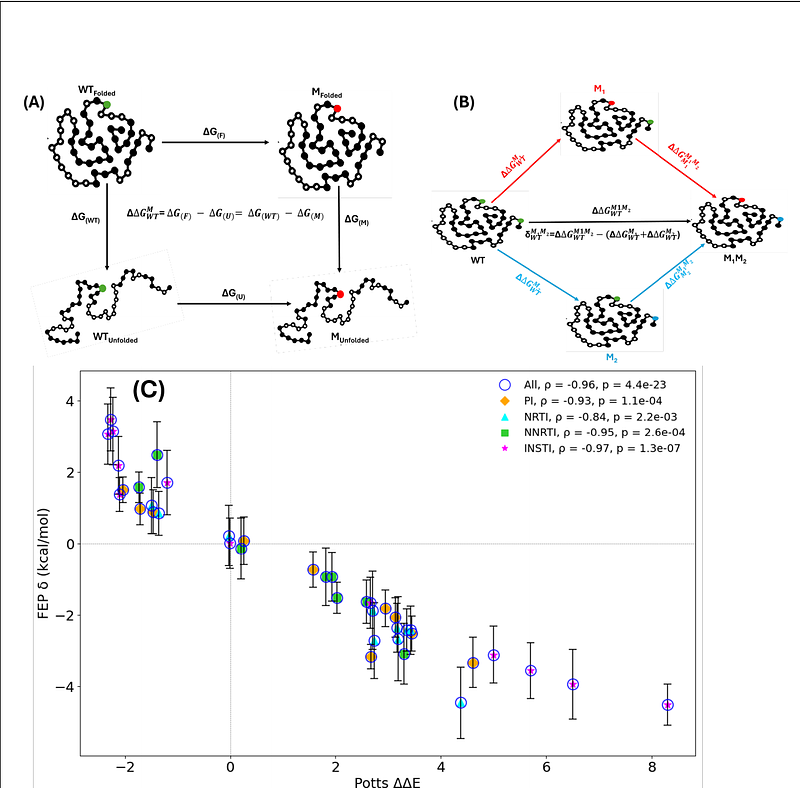Evolutionary Sequence and Structural Basis for the Epistatic Origins of Drug Resistance in HIV

Evolutionary Sequence and Structural Basis for the Epistatic Origins of Drug Resistance in HIV
Biswas, A.; Choudhuri, I.; Huang, K.; Sun, Q.; Sali, A.; Echeverria, I.; Haldane, A.; Levy, R.; Lyumkis, D.
AbstractThe emergence of drug resistance in the human immunodeficiency virus (HIV) remains a formidable challenge to the long-term efficacy of antiretroviral therapy (ART). A growing body of evidence highlights the critical role of epistasis, the dependence of mutational effects on the sequence context, in shaping the fitness landscape of HIV under ART-induced selection pressure. However, the biophysical origins of the epistatic interactions involved in engendering drug-resistance mutations (DRMs) remain unclear. Are the mutational correlations intrinsic to the properties of the protein, or do they arise because of drug binding? We use a Potts sequence-covariation statistical energy model built on patient-derived HIV-1 protein sequences to construct computational double mutant cycles that probe pairwise epistasis for all observed mutations across the three major HIV drug-target enzymes. We find that the strongest epistatic effects occur between mutations at residue positions that frequently mutate during the course of ART, termed resistance-associated positions. To investigate the structural origins of the strongest epistatic interactions, we perform ~100 free energy perturbation molecular dynamics simulations, revealing that the primary contribution to the pairwise epistasis between DRMs arises from cooperative effects on protein stability and folding as an intrinsic consequence of the protein mutational landscape. The results collectively reinforce a mechanism of resistance evolution whereby viruses escape drug pressure by selectively engendering mutations at intrinsically coupled sites, allowing them to cooperatively ameliorate fitness detriments incurred by individual DRMs.